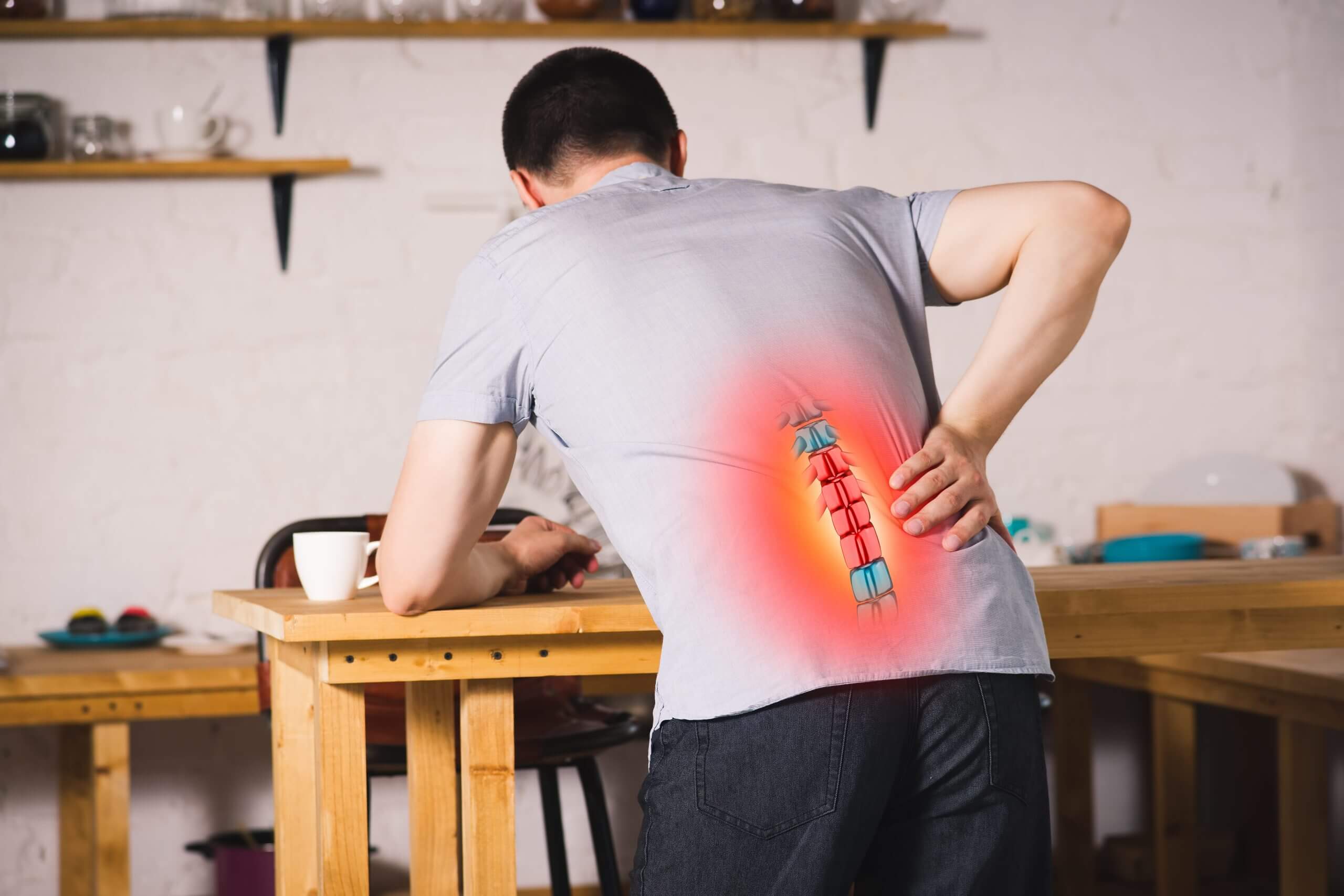
Leanne demonstrates a few techniques for relieving thoracic tension with a foam roller.
Our upper back region cops a lot of stress from daily activities like working out, sitting, and bending over. And it’s not like we’re going to stop doing any of these, well, ever.
That’s why it’s important to loosen up this area whenever it starts to feel tight. Foam rollers are an excellent way to loosen up your thoracic spine and reduce pain. Using a foam roller won’t just help your upper back – it’ll also affect your entire body. Here’s everything you need to know about thoracic spine mobility exercises and why they’re important.
What Is The Thoracic Spine?
The thoracic spine is the longest section of your spine comprising 12 vertebrae. It connects the cervical spine in the base of the neck and the lumbar spine below. It’s arguably the most complex region of the spine given how it supports not just the ribcage, but the neck, flexible joints, nerves, and blood vessels. Think of it as the upper part of your back.
Why Is It So Important?
The thoracic spine is important for several regions. First up, it provides support to your entire upper spine, rib cage and lungs – without it, we wouldn’t be able to support our neck and shoulders or have a safe place to store our lungs. The thoracic spine has two key functions that set it apart from the rest of the spinal region:
- It protects the largest section of the spinal cord – a highly sensitive and important bundle of nerves that travels from the brain down through the spine and into the lumbar region. Without this protection from the thoracic spine, we wouldn’t be able to perform basic functions such as feel pain or touch sensations in our feet.
- The thoracic spine supports the ribcage and in doing so, creates a protective layer around our essential organs like our lungs and heart.
What Problems Can Affect The Thoracic Spine?
Pain in the thoracic spine is usually the result of:
- Dysfunctional joints – usually due to stiffness in one of the many spinal joints or rib joints present in the region – spinal or rib joints get stiff very frequently with sustained positions, sport or even having a cough for a week while sick. The thoracic region is very robust and as such stiffness is more common that instability.
- Muscular issues – things like prolonged postures, muscle irritation, and tension caused by overuse or stress.
How Do Foam Roller Exercises Target Thoracic Mobility?
Foam rollers are an excellent way of targeting the muscle and joint tissues that form part of the thoracic spine. If you haven’t got one yet – they’re readily available online, at sports stores or at your local physio. The foam roller is used in a variety of positions but the most common method is laying over the roller while it is positioned between your shoulder blades. This is known as self-massage and self-mobilisation.
What Are The Benefits Of Foam Roller Exercises?
Think of foam roller exercises as complementary to a stretching routine – done from the comfort of your own home. There are real benefits to using a foam roller that stretching often cannot achieve. Some of the things you may achieve from using your foam roller may include:
- Improved flexibility
- Reduced tension
- Decreased lactic acid or burning in your muscles after activity
- Reduced risk of injury
Basic Foam Roller Thoracic Mobility Exercises
Below are some easy exercises to loosen up the thoracic spine and ease upper back pain:
1. ‘Swimming’
- Lie face up lengthways directly on top of the foam roller
- Keep your knees bent and feet on the floor to provide stability
- Begin by placing both hands up in the air in front of you
- Lower your right arm back to the ground, followed by lowering your left arm down in front
- Alternate your arms reach by switching arm positions
2. ‘Lunge With Rotation’
- Assume a lunge position, ensuring your back is straight
- Hold the foam roller between your hands
- Using your torso gently rotate your arms and roller towards your raised leg – hold for 5 seconds, then twist back to the centre, and repeat 5 – 10 cycles.
- Switch legs and repeat by rotating in the opposite direction
Tips On Using The Foam Roller
Like any piece of new equipment, finding out your preferred pace and pressure will depend on experience. Using a foam roller for the first time can feel slightly awkward, but don’t worry, it’s easy to get the hang of. You’ll want to watch out for going too quickly at the beginning, pushing your back muscles too hard by applying too much pressure can also cause bruising. Take care not to use it on sensitive areas, open wounds or any existing bruises. Always contact a healthcare professional or physio if you notice symptoms worsening.
Other Thoracic Mobility Exercises
There is an array of exercises out there that target thoracic spine mobility. While the above exercises are a good first course, here are some extras to get you into the swing of things.
‘Thoracic Extension’
- Lying flat on your back, place the foam roller underneath you so it is perpendicular to your spine, keep it at the shoulder blade level
- Cradle the back of your head with your hands
- Keeping your body neutral and straight, gently roll back and forth to release tensions in your thoracic spine
- Take care not to roll below the ribcage into the lower back.
‘Thoracic Spine Rotation’
- Start with the foam roller directly underneath the middle of your back lengthways
- Using your right arm, reach over and grab the outside of your left elbow
- Slowly rotate by pulling your left elbow over to the right, making sure the foam roller is stable beneath you
- Repeat in the opposite direction, alternating sides, complete 5-10 cycles.
How Can Seeing A Sports Physio Help My Thoracic Spine?
Getting the right help for upper back pain sometimes means going the extra mile and getting in contact with a qualified physiotherapist who knows what’s what. A professional sports physio will help target those areas of your thoracic spine that matter most. Targeting these areas with thoracic mobility exercises developed with your needs in mind will be the most effective solution to upper back pain.
If you’re experiencing pain or can’t get control of the tension, reach out to our team at Integrity Physio – book an appointment and we’ll get to the root of the problem.




